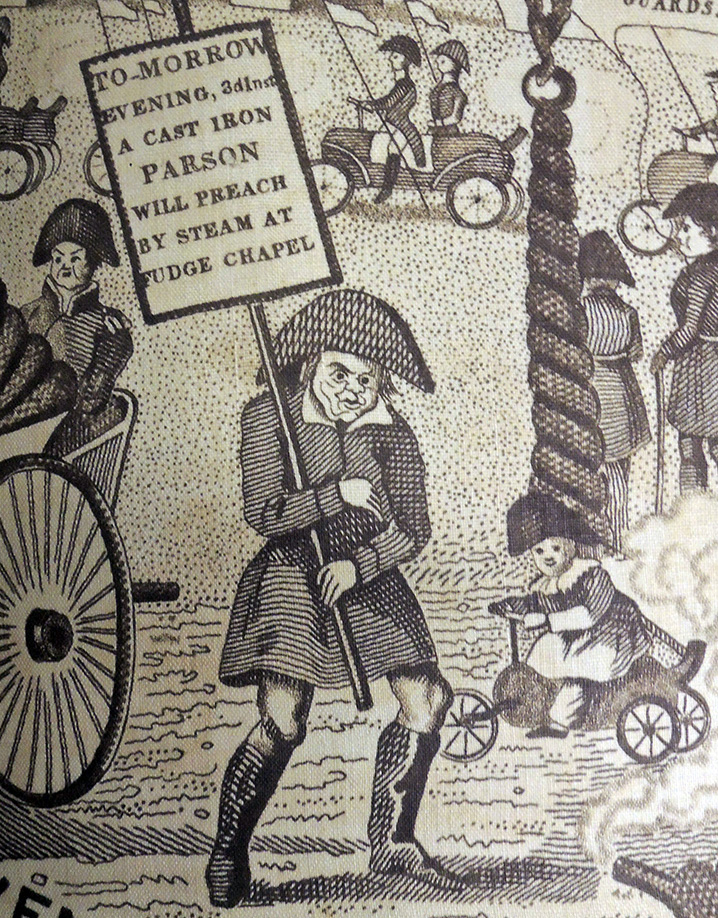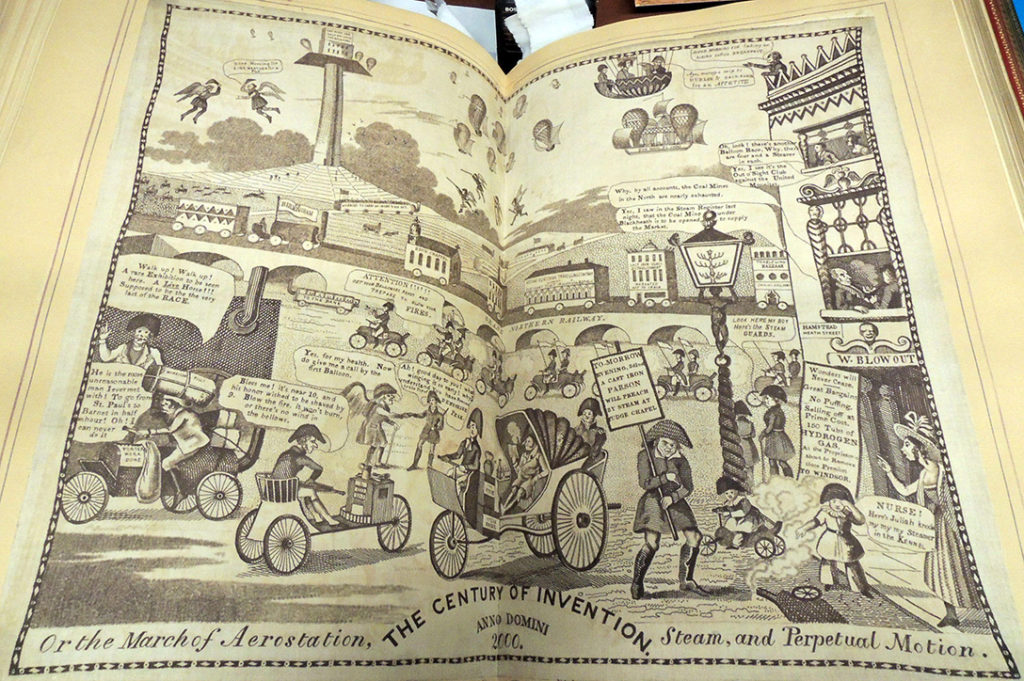 Unidentified artist after Charles Jameson Grant (active 1830-1852), The Century of Invention. Anno Domini 2000. Or the March of Aerostation, Steam and Perpetual Motion, [1832-1838?]. Paper on linen. Ex 9253.145f
Unidentified artist after Charles Jameson Grant (active 1830-1852), The Century of Invention. Anno Domini 2000. Or the March of Aerostation, Steam and Perpetual Motion, [1832-1838?]. Paper on linen. Ex 9253.145f
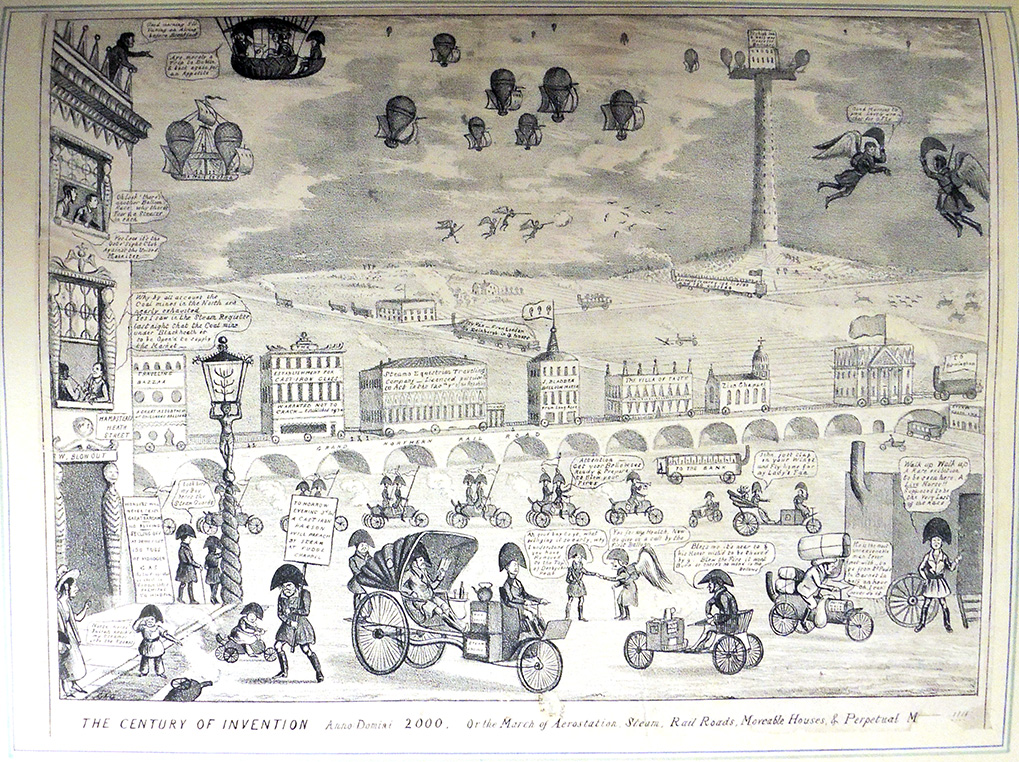 Charles Jameson Grant (active 1830-1852), The Century of Invention Anno Domini 2000 or the march of aerostation, steam, rail roads, moveable houses & perpetual motion, [1832-1838?] Lithograph. Ex 9253.145F
Charles Jameson Grant (active 1830-1852), The Century of Invention Anno Domini 2000 or the march of aerostation, steam, rail roads, moveable houses & perpetual motion, [1832-1838?] Lithograph. Ex 9253.145F
A scrapbook in Princeton’s McCormick Collection of Aeronautica holds two versions of a rare design by Charles Grant imagining what the world will be like in the year 2000. One is a small lithograph and the other a larger reproduction laterally reversed and pasted on linen. The scene is clearly inspired by William Heath’s March of Intellect series of prints [below] published around 1828, making fun of the Society for the Dissemination of Useful Knowledge, established in 1826.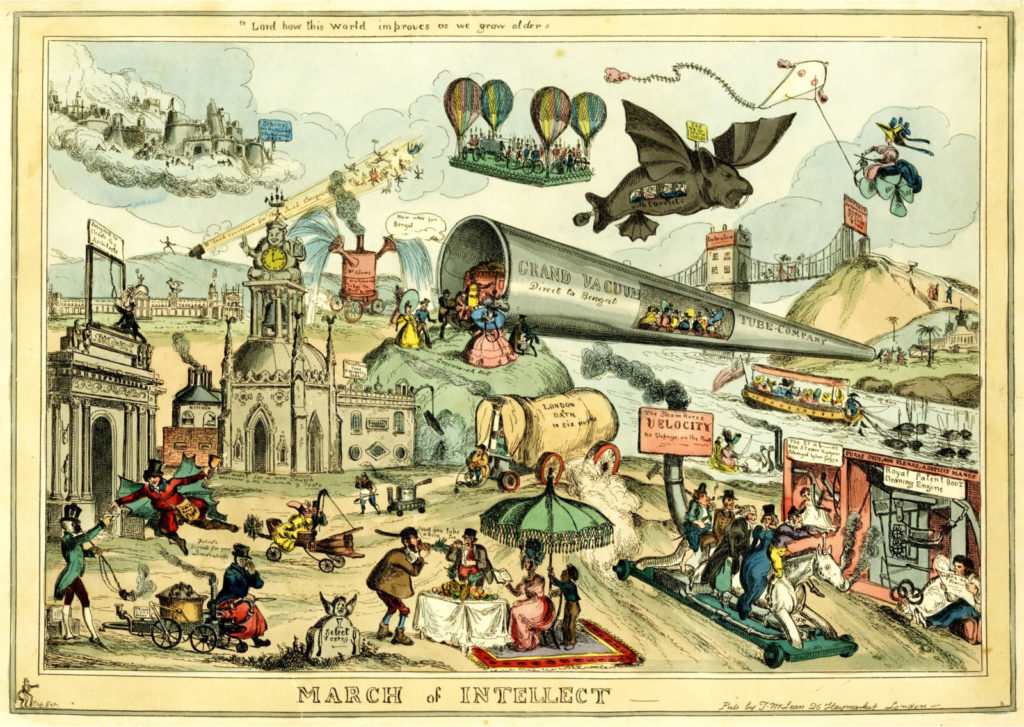
“To-morrow evening, 3rd Inst. A cast iron parson will preach by steam at fudge chapel”
Steam, cast-iron, wind and solar power are all celebrated amidst a general cacophony of speeding travelers. Science and industry have triumphed in all modes of transport, as well as daily life. The coal mines in the North are nearly exhausted, we are told, and a new Blackheath mine will be opened to satisfy demand.
Balloons are becoming passé, now that people are flying with their own wings. Cars, trains, and buses are driven by children as well as adults. Inventions are everywhere and there is still one live horse!
According to wikipedia, “In 1807, French engineers Nicéphore Niépce (who went on to invent photography) and Claude Niépce ran a prototype internal combustion engine, using controlled dust explosions, the Pyréolophore. This engine powered a boat on the Saône river, France. The same year, the Swiss engineer François Isaac de Rivaz built an internal combustion engine ignited by an electric spark. In 1823, Samuel Brown patented the first internal combustion engine to be applied industrially.”
 Good Morning to you. Lovely weather for a Fly.
Good Morning to you. Lovely weather for a Fly.
The print was also published in Caricature Magazine no. 3, February 1, 1834, so we assume these prints come from the same time.
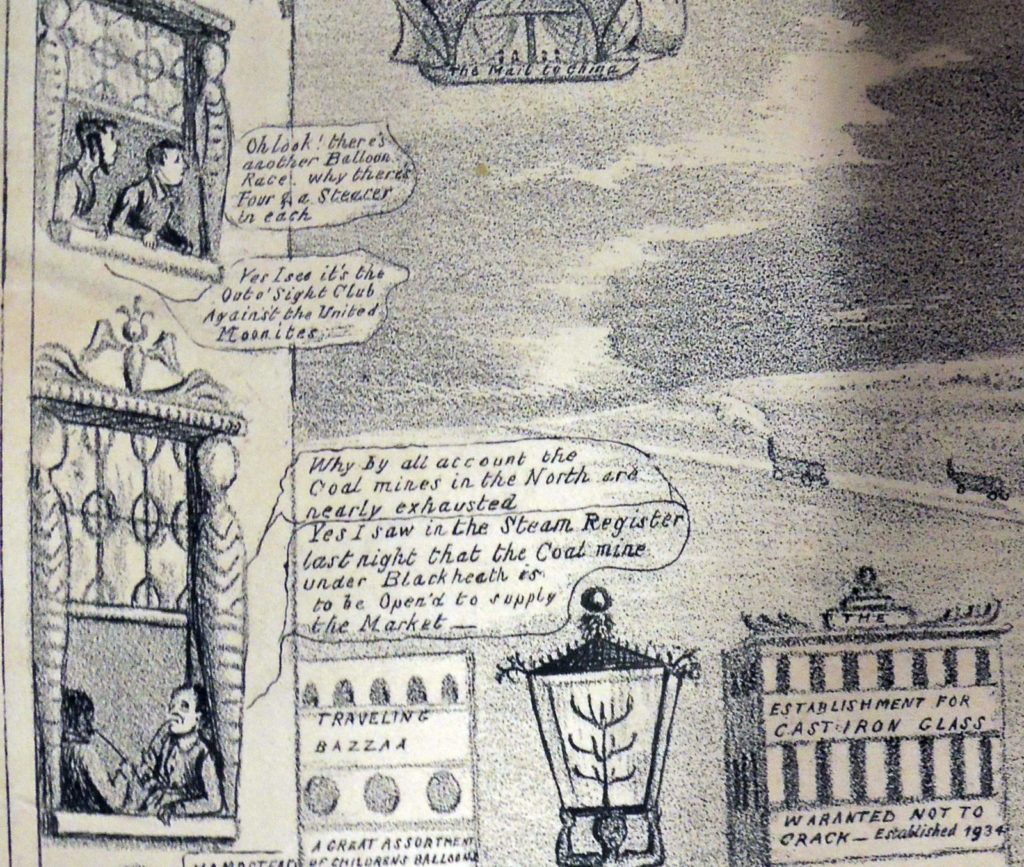 Establishment for cast-iron glass. Warranted not to crack – established 1934
Establishment for cast-iron glass. Warranted not to crack – established 1934
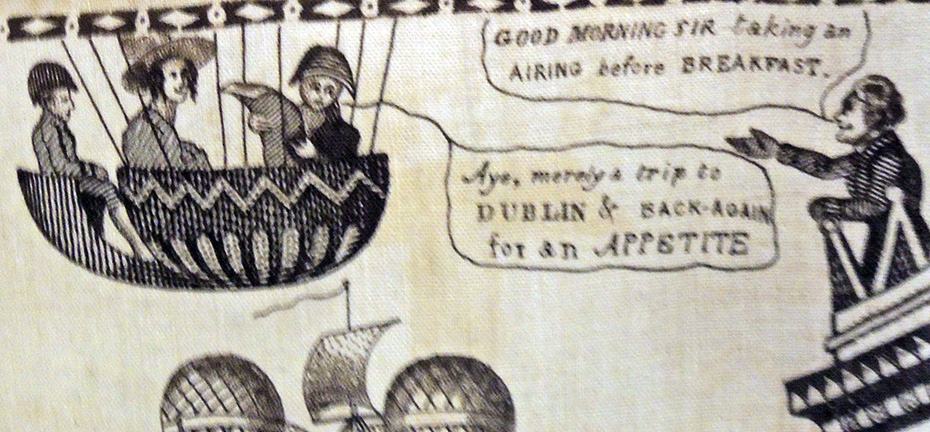 Good morning Sir, taking an airing before Breakfast. Aye, merely a trip to Dublin & back-again for an Appetite.
Good morning Sir, taking an airing before Breakfast. Aye, merely a trip to Dublin & back-again for an Appetite.
Pulled for a writing seminar investigating the rise of self-driving cars and their implications in fields as varied as philosophy, law, engineering, and computer science.

